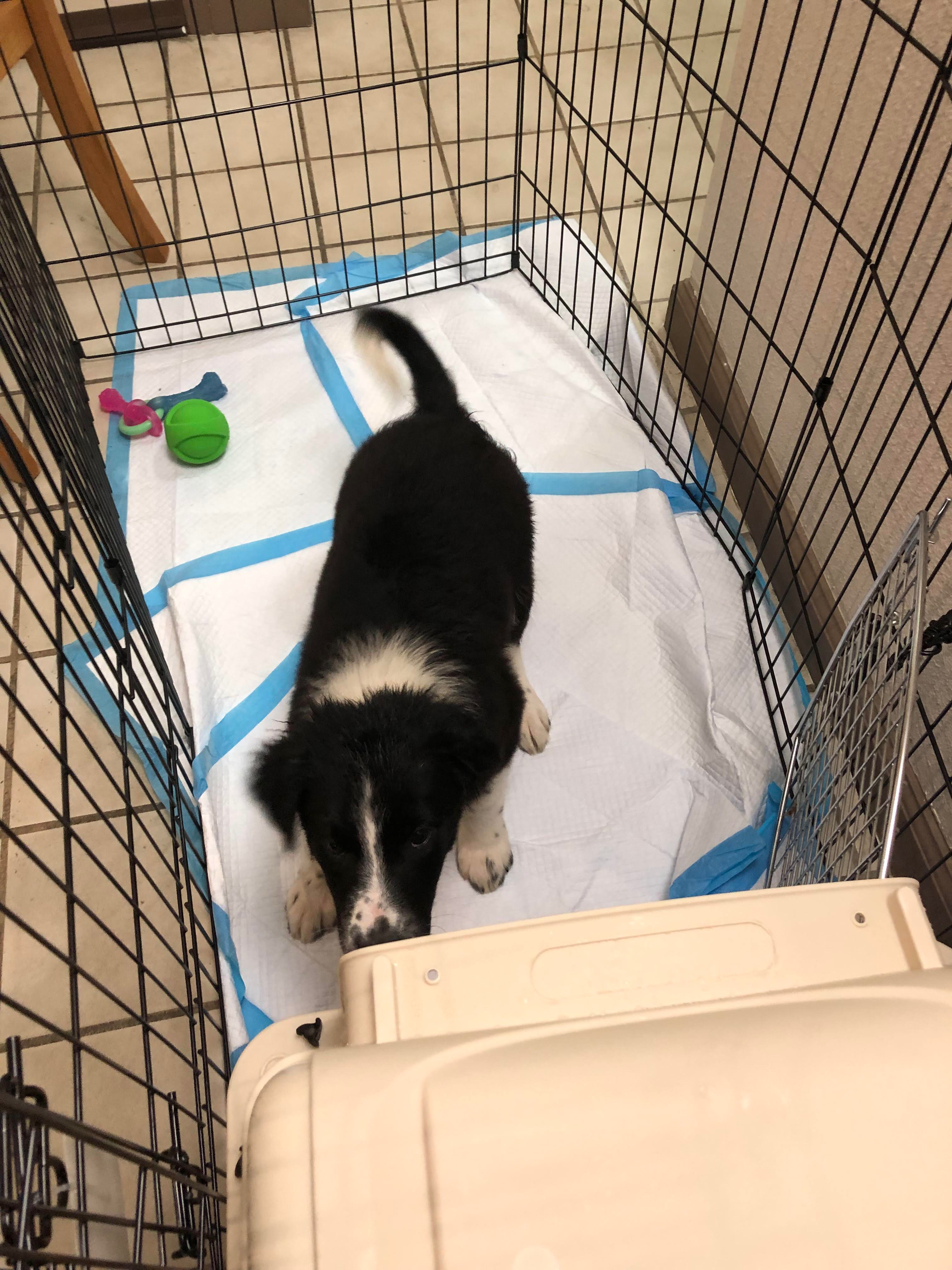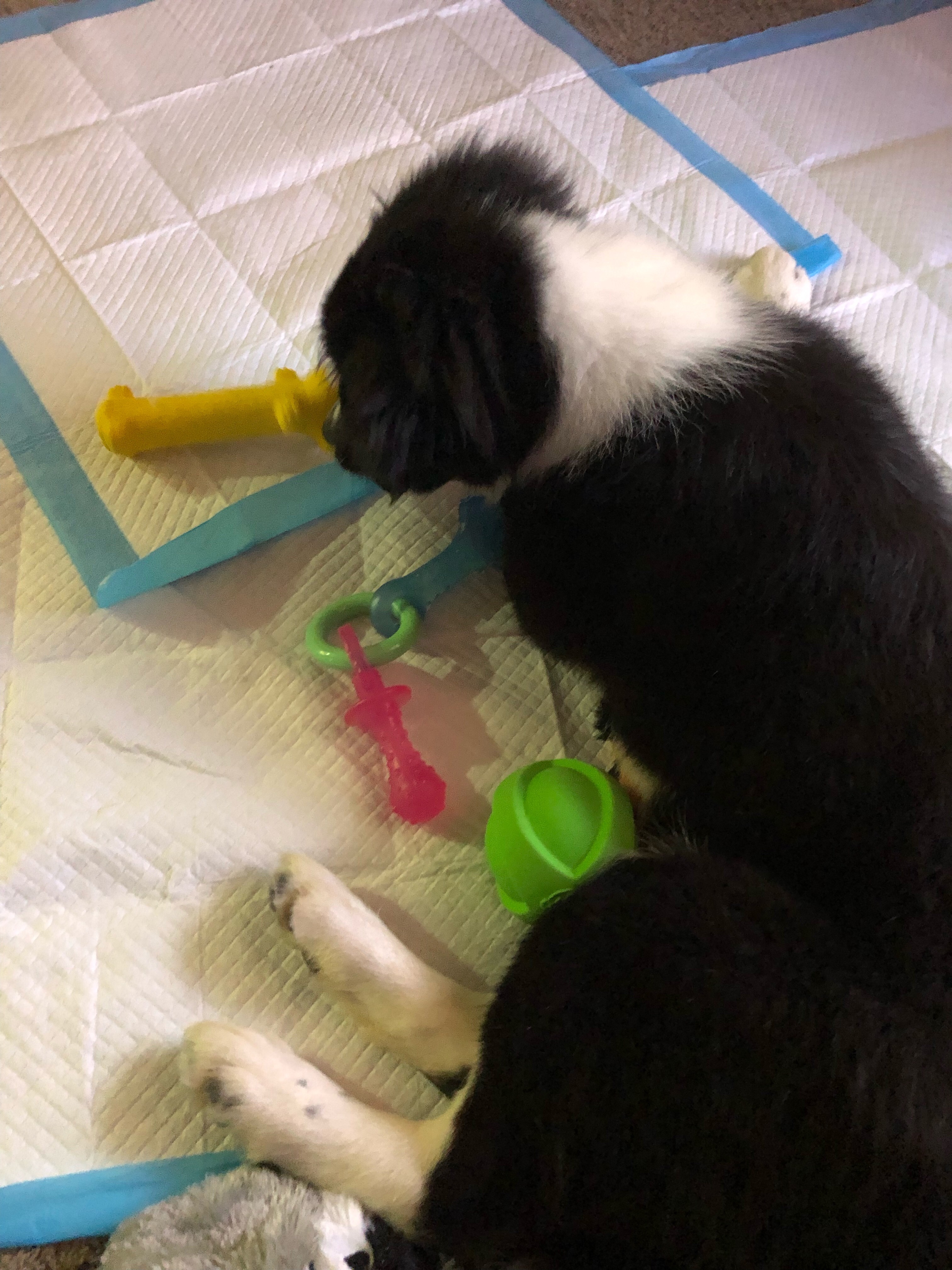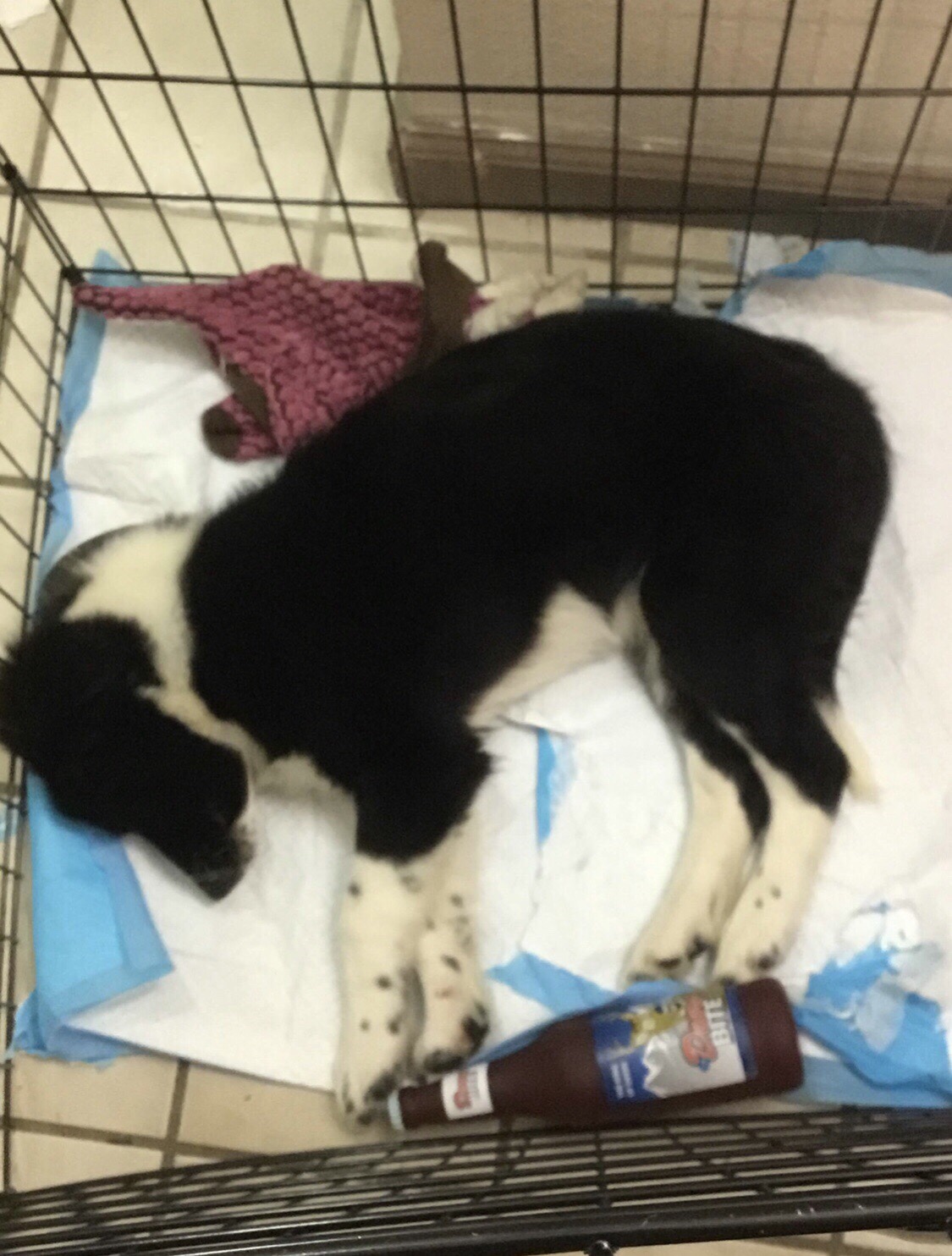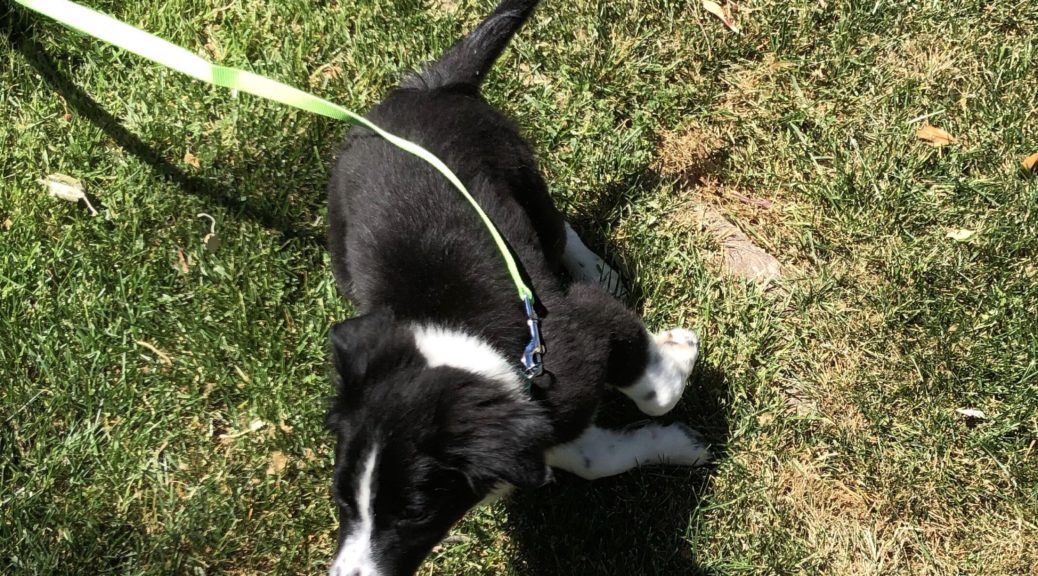Puppies are some of the cutest little beings on the planet! They’re soft, and lovable, playful, bouncy, and so easy to pick up and snuggle.
Quick! What’s the first puppy con that comes to mind?! (Except for biting/chewing 😉) Yup, Potty Training!
The number one asked question of every new dog owner – And number one concern of every parent of every child whose ever mentioned the word “puppy”.

It can be a frustrating time, sometimes longer than anticipated, or it can be smooth and easy. I’ve experienced it all different ways and as I say to everyone? Every dog is different.
My King Shepherd and Malamute were the easiest two – Done in just a weekend. Next easiest would be Kiba our current Husky/WGSD; though in his favor – he was already about 7 months old when we got him and had already been getting potty trained in his foster home (Thanks Sara!). Our Border Collie kid, Raizo and my past Husky Prince tie for the most difficult. Thankfully for me, my parents did most of Prince’s training. And coincidentally – these two were trained using the same technique, paper (pad) training.
Let’s get into it – Which way is best? Easiest? Most effective? The answer, as always is “That depends…”

It depends on how much time you have, how quickly your puppy learns, how routinely you live, and even the type of environment you live in. You could train to go on puppy pads and eventually move them closer to the door and outside. You could use the good old frequent trips outside to show them where to go. There are grass patches now that act as doggy litter boxes that can be effective. An actual doggy litter box with absorbent puppy-safe litter.
What matters most is being consistent and having a set routine. Everybody benefits from having a regular routine of the time you wake, when you exercise and have meals, work, and the time you close it all down for the night to sleep. Just to do it all over again several days a week.
Having a puppy on a set meal routine for instance, will encourage regular, fairly predictable trips out to potty. Having a walk each day will also help keep their systems running regular.

Your rules of thumb are; Every time they wake up from sleep or a nap, potty. Every time after a meal from immediately to up to 30 minutes later, potty. After a big play session of running, zooming and bouncing, potty. Essentially, they go about every 30 mins to an hour. You can do the leg work and take them out to their spot to encourage them to go – but be sure to throw a puppy potty party after! You want them to feel good about where they go!
If they go inside on the carpet, just remember that they’re learning. We wouldn’t get angry at our infants for soiling their diapers. Don’t get angry at the puppy.
Puppies aren’t completely in tuned with their bodies. It takes a bit for them to recognize patterns of the physical feelings and sensations, what they mean, and how to take care of it. When you do your due diligence and pay close attention you will start to notice their signs and it is up to you to guide your little one to the correct spot.
Things to look for: Sudden sniffing in circles, tail held high, sometimes stiffened at the base, then you’ll see concentration show up on their face – bring them to their spot!

Sometimes the act of stopping them to bring them out can startle them and then their bodies shut down and they don’t need to go anymore. That’s ok, try again in another 10 minutes or so.
Reward, reward, reward! That is what will train them faster than anything else. Have some special “potty party” treats that you give when they’ve successfully gone in the right spot.
Just remember it takes time, patience and proactive consistency!
Published by Amy Noble on 7/17/19
Amy is an Animal Behaviorist and Dog Trainer in Monterey, Ca, with over Thirty years of experience and active knowledge working with animals. Amy’s love for every dog, cat, horse, rabbit, human (and more!) that she trains truly shows in her work and dedication.

